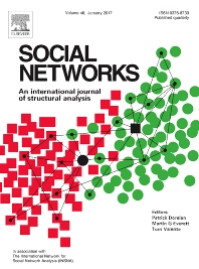
Mapping social milieus and cohesion patterns between 1997 and 2014. Exploiting the potential of the occupational position generator
Abstract
The study joins the stream of the social network approach attempting to look beyond micro-level association patterns towards macro-structural modeling. Utilizing the versatility of the occupational position generator technique for measuring network resources generally related to hierarchical aspects, an attempt is made to apply the tool for horizontal targets. Furthermore, with some conceptual transfer, the paper applies the distinction between omnivorous and univorous patterns of symbolic selectivity to nexus choice as well. The comparative investigation relies on data from four Hungarian national surveys from the 1990s on, using 19 items of the position generator to measure network resources. Exploratory and confirmative factor analyses reveal four dimensions of occupational milieus; Goodman RC modeling outlines two organizing axes behind them interpreted in network terms as status and betweenness centrality. Latent class analysis results in a five-element typology with both vertical and horizontal features. The findings point to the stability, in some respects to the increase of gaps between various segments along the social ladder. As concerns the cultural aspect, returns on relational selectivity indicate some fading or even reversal of the omnivorous trend in contemporary Hungary; both tendencies suggesting some growth of distances between milieus with the related problems of social cohesion.
Social Networks, Volume 55, October 2018, Pages 116–129.

